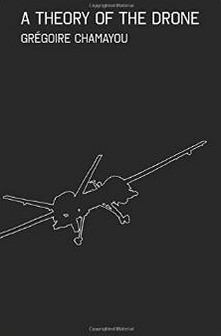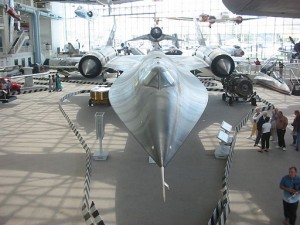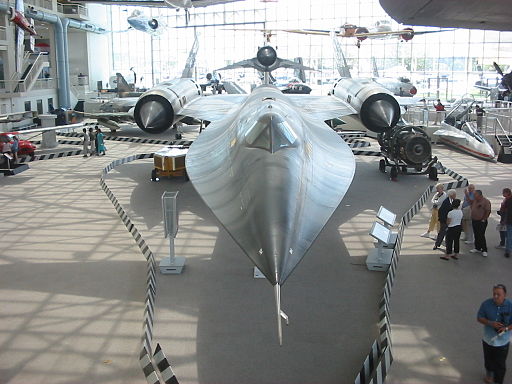aNewDomain — A new book argues that drones mark the most radical development in the history of warfare. Ted Rall reviews A Theory of the Drone.
Without debate or even formal acknowledgment by the government that it uses unmanned aerial vehicles (UAVs) to kill people overseas, drones will – or have, depending on your perspective – revolutionize war as we know it.

Written with breathtaking clarity from a perspective that blends politics, history and philosophy, A Theory of the Drone convincingly argues that armed drones are drastically altering relations between nations and individuals, and that it’s probably already too late to turn back.
I’ve been obsessed with drones since the Bush administration deployed them during the months after 9/11 over Afghanistan and Pakistan, where they have since killed thousands of people, the vast majority of them demonstrably innocent civilians who were not targeted, the remainder so-called “militants” who don’t fit the popular definition of a terrorist determined to attack America, but are merely guerrilla fighters trying to bring down the governments of American client states and allies.
Coverage of the Aviary, a drone research facility at Wright-Patterson Air Force Base in my hometown of Dayton, Ohio that designs drones to mimic flight in the animal kingdom from hawks and hummingbirds down to bees and dragonflies, convinces me that we have only begun to scratch the surface of the unmanned flight revolution.
Even though I’ve read tons about drones, French philosopher Grégoire Chamayou blew my mind with his lucid observations about the political and psychological of armed UAV warfare. Whether or not you find the subject of interest, I can say with certainty that “A Theory of the Drone” will be one of the most important books you have ever read.
Because even if you don’t care about drones, drones care about you.
In combat, two or more adversaries clash violently. To be sure, there can be and often is a wide gap in manpower, training, and technology that all but assures the outcome. Nevertheless, combat entails risk to everyone who participates in it.
To cite an extreme sample, the pilot who dropped the atomic bomb on Hiroshima might have experienced an equipment malfunction that caused his plane to crash.
There was of course a vast difference in the risks taken by the Japanese residents of Hiroshima on the ground and Paul Tibbets, the pilot of the Enola Gay, but still, he did place himself in some physical jeopardy.
Drone warfare, on the other hand, is not combat between adversaries. Drone warfare, Chamayou points out, is the relationship between hunter and prey.
“Contrary to Cael von Clausewitz’s classical definition,” he writes, “the fundamental structure of this type of warfare is no longer that of a duel, of two fighters facing each other the paradigm is quite different: a hunter advancing on a prey that flees or hides from him. The rules of the game are not the same.”
He quotes George A. Crawford, author of a report on “manhunting theoretical principles” for a military university:
In the competition between two enemy combatants, the goal is to win the battle by defeating the adversary: both combatants must confront to win. However, a manhunt scenario differs in that each player’s strategy is different. The fugitive always wants to avoid capture; the pursuer must confront to win, whereas the fugitive must evade to win.”
This is huge.
Chamayou notes attempts by the military, including an attempt to issue combat medals to drone operators, to imbue these remote-control killers with the glory that follows the courage demonstrated by risk-taking.
But there is no risk-taking – none whatsoever. Not even psychological: despite media reports that drone operators could suffer PTSD, there is no evidence whatsoever that this is ever happened to a single one.
 At worst, drone operators report being mind numbingly bored as they watch hour after hour of ordinary civilians walking around dusty towns in the Middle East and South Asia doing ordinary civilian things, and sometimes the surreal aspect of blowing people up at work and then coming home to your wife and kids every night in the American suburbs.
At worst, drone operators report being mind numbingly bored as they watch hour after hour of ordinary civilians walking around dusty towns in the Middle East and South Asia doing ordinary civilian things, and sometimes the surreal aspect of blowing people up at work and then coming home to your wife and kids every night in the American suburbs.
Eliminating physical risk, however, comes at a political cost to the country that uses drones to invade foreign airspace.
And notice how no one talks about sovereignty?
Classic counterinsurgency doctrine teaches that asymmetric warfare is a war for hearts and minds.
Drones, Chamayou says, seem to solve the problem of the terrorist hydra whose death inspires dozens of his family and friends to take up the fight.
Chamayou writes:
An armada of hunter killer drones…can win that race and eliminate individuals at least as fast as new ones are recruited. The strategic plan of air counterinsurgency is now clear: as soon as the head grows back, cut it off. And never mind if, in a spiraling development of attacks and reprisals that is hard to control, the perverse effect of that prophylactic measure is to attract new volunteers … Never mind if the enemy ranks thicken, since it will always be possible to neutralize the new recruits as fast as they emerge. The cull will be repeated periodically, in a pattern of infinite eradication.”
Even if this doesn’t make your blood thicken, it should make your brain hurt: “The partisans of the drone as a privileged weapon of ‘antiterrorism’ promise a war without losses or defeats,” he writes. “What they fail to mention is that it will also be awarded the victory. The scenario that looms before us is one of infinite violence, with no possible exit; the paradox of an untouchable power waging interminable wars toward perpetual war.”
“Nobody dies – except the enemy.” That’s the argument proponents of drone warfare have sold, fairly successfully, to the American public. It’s understandable. Nobody wants to see their sons or daughters, or other American sons or daughters, coming home from battle in body bags.
The problem with this tribalist attitude, writes Chamayou, is that the rest of the world is paying attention. Drones broadcast: American lives matter, foreign lives do not. You can’t blame the foreigners for not liking us very much.
Especially when the US military and its allies in the media claim that drones are actually a humanitarian weapon due to their precision – he makes a mockery of this – and because it saves American lives. “The drone,” he scoffs, “does indeed save our lives.”
When you choose this lesser evil, he notes, you are nevertheless choosing evil.
Countries like the United States – spending billions of dollars for thousands of drones employed around the world – will become “drone states,” nations whose reliance on military technology abroad must inevitably lead them to apply them domestically, by law enforcement agencies in the cities and states.
One can easily foresee how police drones, which have already been acquired by numerous local law enforcement agencies and have taken part in the pursuit of criminal suspects on the lam, might be used to shoot and kill a dangerous fugitive.
Few people would complain about this use of armed drones on American soil.
What happens next is less a slippery slope argument than a logical prediction.
The US military and CIA often justify using drones in Afghanistan and Pakistan on the grounds that it’s too dangerous to send in ground troops to try to capture its targets.
Rather than send policemen into a hostage situation, drug den, or other place where a criminal suspect or someone wanted for questioning who might be considered armed and dangerous, the authorities might instead choose to use a so-called precision drone to blow the place up and eliminate the suspect entirely.
Although it happened during the pre-drone era, this isn’t unprecedented in recent history: Philadelphia police dropped military grade bombs on the headquarters of a radical political cult called MOVE in 1985, burning down 65 houses.
Eventually, drones will be used to crush domestic political dissent.
Unfortunately, we have forgotten so much of America’s basic constitutional rights and traditional political ethics that those who appeal to our better natures find themselves lecturing to us as though we were not particularly bright kindergartners. Having found myself there, I wish there were a better way. In the meantime, we need to digest Civil Society 101:
“In law enforcement, one should first try to capture the individual, giving him the possibility of surrendering and even, if possible, offering him that chance,” Chamayou writes.
How far we have devolved since 9/11!
Did, for example, anyone ask whether Osama bin Laden was given the chance to surrender? And when it came out that he was captured alive but wounded, and was then executed on orders from someone sitting next to the President of the United States in the White House Situation Room, did anyone but a few leftists care?
When someone like bin Laden is denied rights that until recently were widely considered universal, is only a matter of time before those rights erode and eventually vanish.
The armed drone, which unambiguously allows the state to kill anyone and everyone with impunity, without the slightest physical risk whatsoever, has set the stage for a future dystopian nightmare even George Orwell didn’t imagine.
For aNewDomain, I’m Ted Rall.
Cover image: Wikimedia Commons













